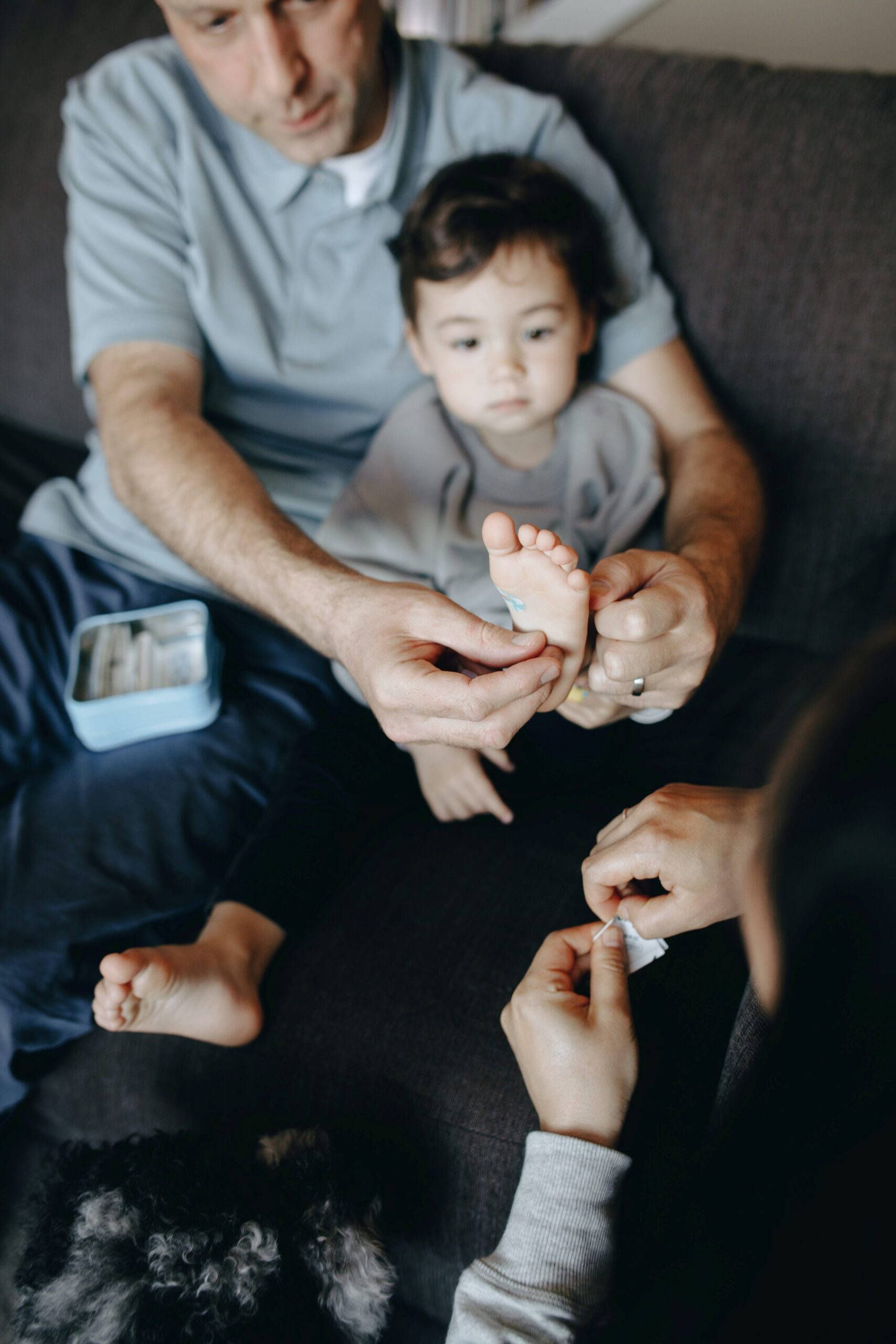Photo by PNW Production/Pexels.com
As a Dad, it’s important to have some basic first aid skills to ensure the safety and well-being of your family.
Accidents and Incidents can happen at any time, and knowing how to respond quickly can make a significant difference in the outcome.
So, let’s cover 8 Basic First Aid Skills that every Dad should know.
1 – CPR
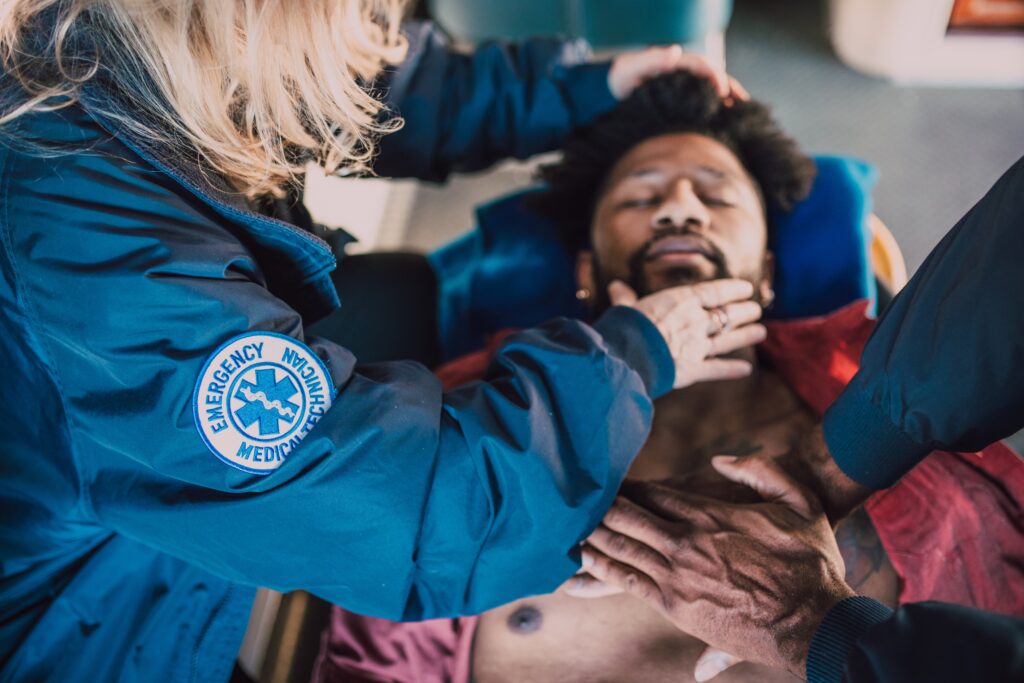
Cardiopulmonary resuscitation (CPR) is a life-saving skill that can help maintain blood flow and oxygenation to the brain and other vital organs during a cardiac arrest.
Knowing how to perform CPR is essential for all dads.
You can learn this skill by taking a first aid or CPR class offered by many organisation around the world.
2 – Choking
Choking can happen to anyone, and it’s essential to know how to respond quickly.
If someone is choking, first try to dislodge the object by giving 5 back blows followed by 5 abdominal thrusts.
If the object is still not dislodged, call the emergency response number for your country immediately.
3 – Burns
Burns can happen in the kitchen or anywhere around the house.
If someone gets a burn, immediately run cool water over the affected area for 10-15 minutes to help relieve the pain and reduce swelling. Also make sure to keep some Burnshield products in your home first aid kit.
If the burn is severe, seek medical attention immediately.
4 – Cuts and Scrapes
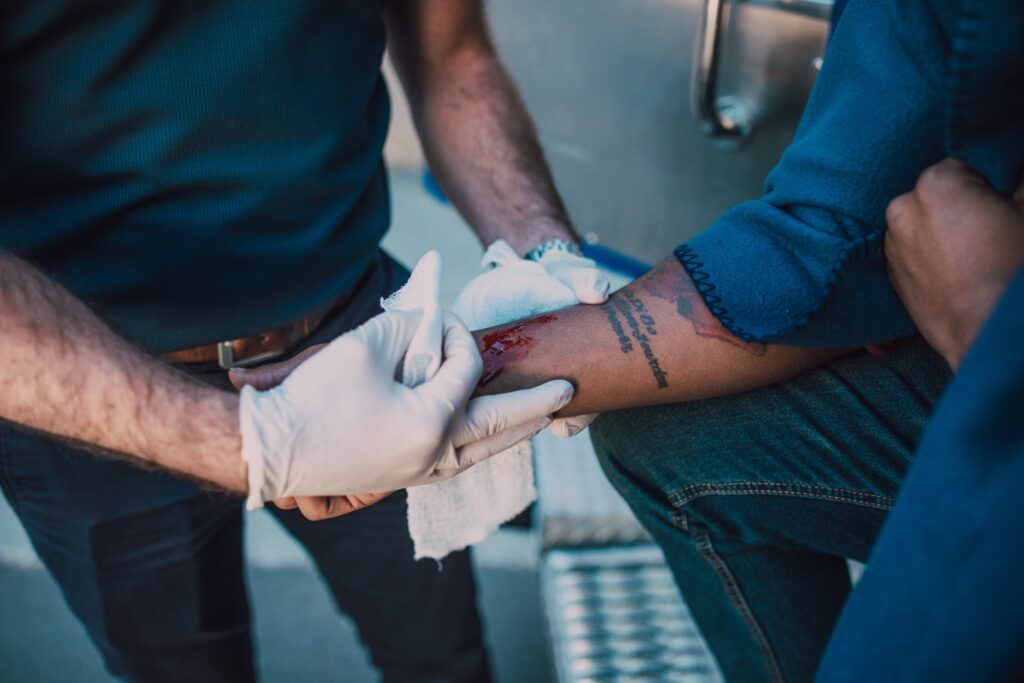
Cuts and scrapes are common injuries, especially for kids.
If someone gets a cut or scrape, clean the wound thoroughly with soap and water, then apply a bandage or sterile gauze to cover the wound.
If bleeding does not stop or the wound is deep, seek medical attention.
5 – Allergic Reactions
Allergic reactions can range from mild to severe, and it’s essential to know how to recognize and respond to them.
If someone experiences an allergic reaction, first administer any prescribed medication, then call the emergency number for you country, if the reaction is severe.
6 – Sprains and Strains

Sprains and strains can happen during physical activities or accidents.
If someone gets a sprain or strain, use the RICE method: Rest, Ice, Compression, and Elevation.
Rest the affected area, apply ice, use a compression bandage, and elevate the affected limb to reduce swelling.
7 – Heat Exhaustion and Heatstroke
During hot summer months, it’s essential to know how to recognize and respond to heat exhaustion and heatstroke.
If someone experiences symptoms such as dizziness, headache, nausea, or confusion, move them to a cool place and provide fluids.
If the symptoms persist or worsen, seek medical attention immediately.
8 – Poisoning
Poisoning can happen if someone ingests or inhales harmful substances.
If you suspect someone has been poisoned, call the Poison Control Centre in your country immediately.
Do not induce vomiting or administer any medication without medical advice.
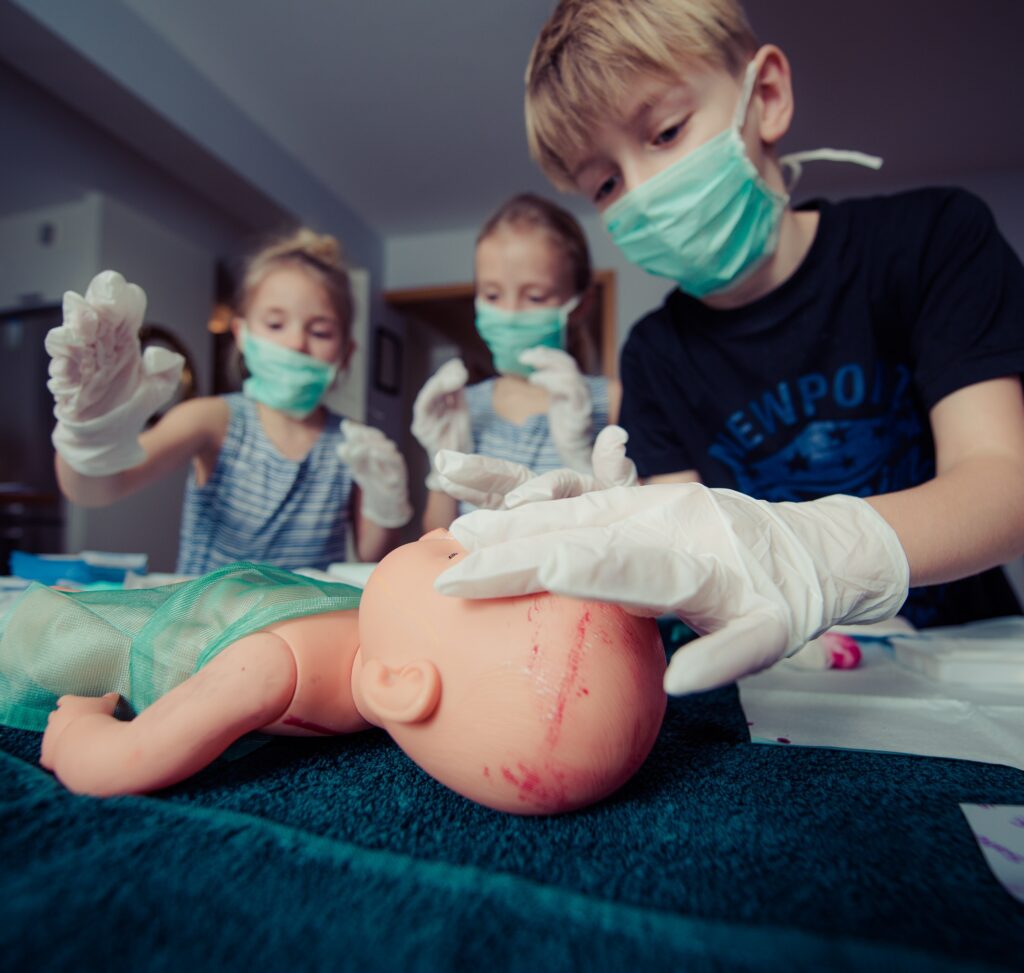
Knowing basic first aid skills can make a significant difference in the outcome of an accident or injury.
By learning these skills, you can help ensure the safety and well-being of your family.
If you haven’t already, make sure you have a basic first kit in your home.
A basic home first aid kit should contain items that can help treat minor injuries, such as cuts, scrapes, burns, and bruises.
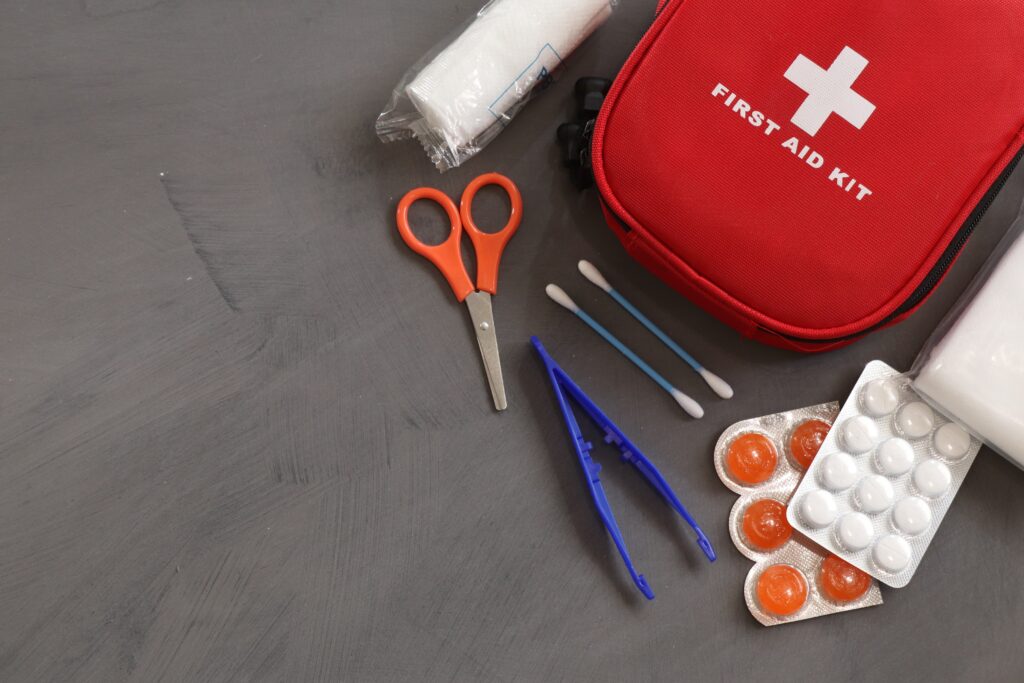
Here are some essential items that you should have in a basic home first aid kit:
- Adhesive bandages (various sizes) – for covering small cuts and scrapes
- Sterile gauze pads and roll – for dressing larger wounds and controlling bleeding
- Adhesive tape – to hold the gauze in place
- Antiseptic wipes or solution – to clean wounds and prevent infection.
- Hydrocortisone cream or calamine lotion – for relieving itching and irritation from insect bites and rashes.
- Disposable gloves – to protect yourself while providing first aid.
- Scissors – for cutting bandages and gauze
- Burnshield – for the emergency care of burns and scalds
- Tweezers – for removing splinters or other foreign objects from the skin
- Instant cold pack – for reducing swelling and pain
- Thermometer – to monitor body temperature
- Pain relievers such as acetaminophen, ibuprofen, or aspirin – for treating minor pain and fever
- Flashlight and extra batteries – to use in case of a power outage or to examine wounds in low light conditions
- First aid manual or guide – to help you handle emergencies and provide appropriate first aid
It’s also important to regularly check the expiration dates of the items in your first aid kit and replace them as needed. By having a basic home first aid kit and knowing how to use its contents, you can help treat minor injuries and possibly even save a life in an emergency.
I hope this post has provided helpful information for all Dads out there.

